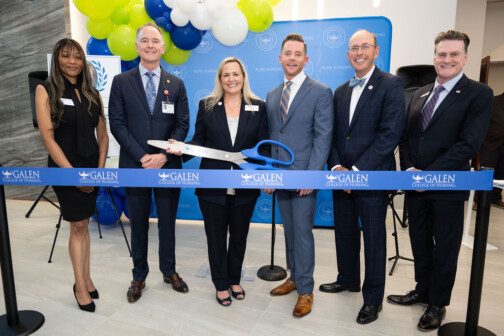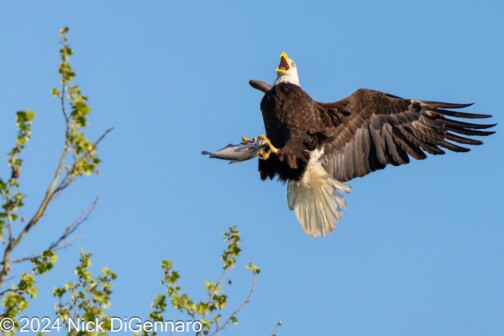
This morning I called Willy Warner, the national sales manager and corporate executive chef at Steve Connolly Seafood Company in Boston. Willy spends a lot of time in Dallas working with our local chefs and educating them on seafood. Armed with a lengthy list of questions about salmon, I started firing away. When we got to the complicated marine biology stuff, Willy handed me off to Robert Chandler, Connolly’s senior buyer and Boston plant manager. Chandler also has a degree in marine biology. Below is a Q&A with the folks from Connolly. Most of the questions are copied and pasted from reader’s comments and questions. Here goes.
NN: Let’s talk about wild Atlantic salmon. We used a sample in our flavor taste test and two people thought it tasted better than Copper River salmon.
ACS: Well, if you pick a fish for true fat content, Atlantic farm-raised salmon has a high fat content. King salmon should have a gamier taste. But Atlantic salmon is raised all over the world. The key is knowing where and how the fish is raised and knowing the practices used, the waters they are raised in, and the regulations of the country they are raised in. There is a huge crisis now in Chile. They have lost 80% of their salmon to disease.
NN: One reader: “Bay of Fundy farmed salmon is Atlantic salmon, genus Salmon.”
SCS: Correct. No king. Most farm-raised king comes out of New Zealand (for the Japanese market) or British Columbia.
NN: The same reader: “King and Chinook (which are 2 names for exactly the same Pacific fish) are genus Oncorhynchus. Completely different salmon you were tasting.”
SCS: Not on the Copper River salmon.
NN: Ocean-caught vs. River-caught. Which is better?
SCS: It’s not really where it’s caught, it is when it is caught that determines the taste. After the fish are born they go to the ocean for a year or two before they go back to spawn. The time of the year determines the quality of the fish. In late fall they don’t have the fat content because their clocks haven’t clicked them into a feeding frenzy to spawn.
NN: Why so much hype on Copper River salmon?
SCS: The Copper River is a big river and the hype comes around May 15 when the regulators announce the amount of salmon that can be harvested. Keep in mind, this used to be a great event in the early 80s. It was the first run of fresh salmon and it was before farmed salmon. It was all wild.
NN: So who decides the amount of the harvest?
SCS: Fishery scientists study population dynamics and they take samplings of fish length, weight, girth, and age (they count the tiny rings on the ear bones). They add environmental factors like natural predations, snow melt, water temperature, and food abundance to come up with a theory on what the population is and determine an allowable catch.
Salmon are easy because they return each year. The Copper River has fishery biologists that sit in towers and count fish. They also use sonar units that count as the fish migrate. The amount of time the river is open is very controlled. Last year the river was open for 12 hours, this year it’s six. This year they open from 6 am to 12 pm on Monday and Thursday. The fish are landed, counted, and taken out and then they let the river lie as it would for three days. Then they open it again until they reach the end when the fish [king and sockeye] loses its luster [about 3 weeks]. Then different salmon like coho, pink, and chum come to spawn.
This year ten sockeye have been caught to every king. For us to get 100 pounds of Copper River king we had buy 1,000 pounds of sockeye. They are distinctive and difference in flavor and color. Sockeye has a robust flavor and a fire engine color that is popular in the Japanese market. Copper River is $10 per pound higher. [wholesale]
NN: One of our tasters talked about being able to “custom order the color” of salmon. What is the story about farm-raised fish and dying them like shoes?
SCS: I’d love to meet him. We couldn’t get our growers to do it. Farm-raised salmon are not dyed with artificial coloring. They have learned to synthesize natural carotenoids or pigments in the lab (astaxanthin and canthaxanthin) and add it to the food. Wild salmon feed on anchovy, sardine, herring, and shrimp for their color.
NN: One reader writes: “Farmed salmon is “dyed” by the addition of coloring to their feed. Just as factory-farmed cattle, they can be “finished” with a richer, and, in this case, dyed, feed mix. “Anemic pink” is a great description of un-dyed farmed salmon. Pallid would be another.”
SCS: Improper nomenclature. It is subsidized by using synthetic carotenoids that molecularly mimics that found in nature.
NN: Another comment. “Wild salmon has a naturally richer color because of their diet, including shrimp, which is usually too expensive to add, in quantity, to fish pellet/feed manufacture.”
SCS: Fair assessment. But they aren’t eating jumbo shrimp it’s a small crustaceans like krill.
NN: From another reader. “I’d also augment your suggestions with the thought that a better taste test would include several different preparations.”
SCS: Not true. It gives you how the fish cooks and behaves. To get a clear picture of flavor we sear it in a little oil canola and finish it off in the oven until done.
NN: One reader suggested tasting the fish raw.
SCS: You need heat to infuse the oils and fats into the meat. That is the base of the flavor. I could see a raw tasting, but I don’t see how 98.6 on your tongue would really give you what you need to know.
NN: One reader’s thought: “Color, texture, and flavor, not to mention tasters’ preferences, vary with preparation. CR salmon’s supposed richer oil content and firmer raw texture would be indistinguishable in many recipes and inappropriate in others.”
SCS: Fair to say.
NN: From a reader: “From my readings and my own subjective tastings, Copper River, and to an even greater extent, Yukon River (running some 2000 miles clear across the State of Alaska, but not as steeply as Copper River, which is 300 miles long) salmon indeed have more fish oil–why?”
SCS: It could have to do with the amount of what they need to get up river. The salmon could be hitting the herring at their prime. It’s not a biological thing. It all depends on what they feed on. They eat and assimilate the protein like we do. If we eat lean, we’ll be lean. If we eat at McDonald’s, our liver will be pate. If you ignore the food source and say area or length of river, it is not completely accurate.
NN: A comment: “I guess that makes Yukon salmon the Superman of salmon, because the river is even longer than the Copper.”
SCS: Absolutely. There are some people who argue that the Yukon salmon has higher fat. But that varies on every river and every year depending on the food the fish have available to those populations. It can and does vary from year to year.
NN: A reader says: “An inordinately large portion of that supply, especially the best king, goes to Japan, where people will pay multiples of the $40/lb you saw at TJ’s, for superior fish. I can show you photos from my travels of salmon that had marbling similar to what you’d see in a beef steak of “select” or lower “choice” USDA grades. These are fish that even national (US) supplier seldom sees, instead going straight to exporters who will pay a considerably higher price.”
SCS: Yes and no. I’d be hard pressed to say that the box [of Copper River salmon] we got in this morning would be nicer in Japan. It’s all about who you deal with and trust. The U.S. is not a dumping ground for fish.
NN: So how do these fish know how to find their way back to their original location to spawn?
SCS: The fish are imprinted at young age. It happens right after birth. The organic compounds of the water are imprinted on their olfactory senses and they are then capable of identifying the breakdown of the water. Salmon are able to read their mental maps based on tracing these organic compounds to find the tributaries.
NN: From a reader: “The reddest (if that is a word) salmon is Alaskan wild sockeye; in Alaska they are called “reds”.”
SCS: Correct. They have the ability to metabolize a higher range of carotenoids that translate into brighter color.
NN: A reader says: “The fact that the CR salmon you had at TJ’s and D’s tasting wasn’t too red supports the notion that it was indeed of the King variety.”
SCS: Kings can also get duller and drier as they get closer to their spawning.
NN: A reader writes: “Some of the best tasting ocean caught salmon, where “troll-caught” is less environmentally damaging than gillnet- or purse seine-caught fish (because troll-caught results in almost no by-catch and doesn’t “dredge” the ocean bottom), come from Cook Inlet, SW of Anchorage, and from Bristol Bay (which is also where great sockeye comes from).”
SCS: Completely correct.
NN: Let’s end on completely correct. Have a nice weekend.





